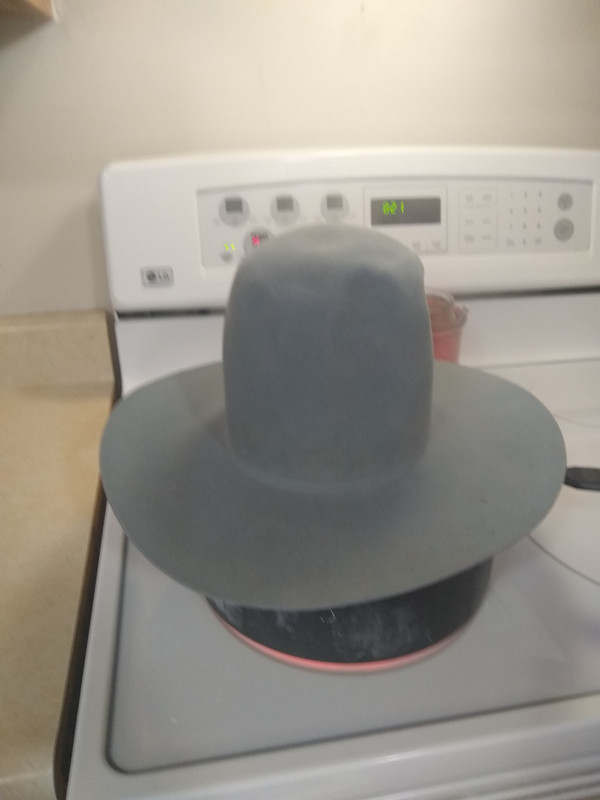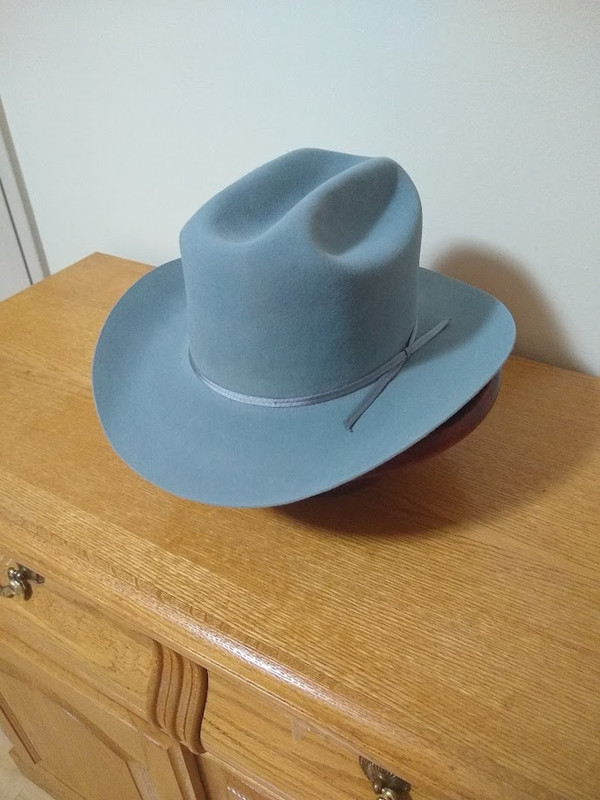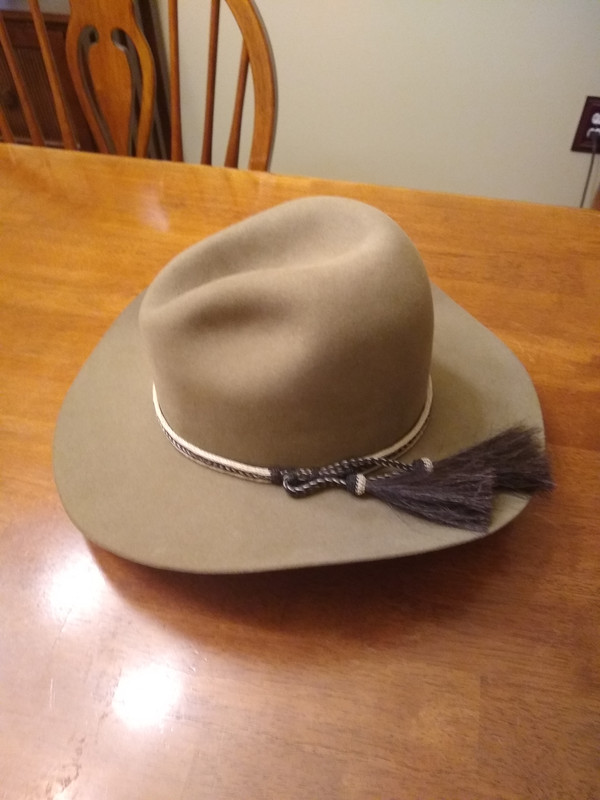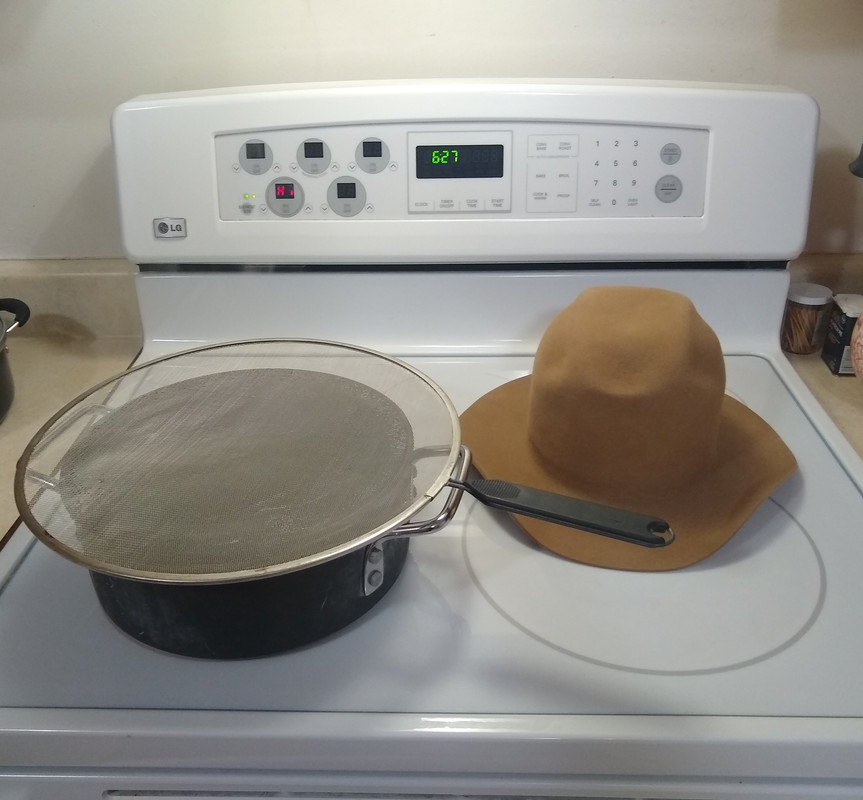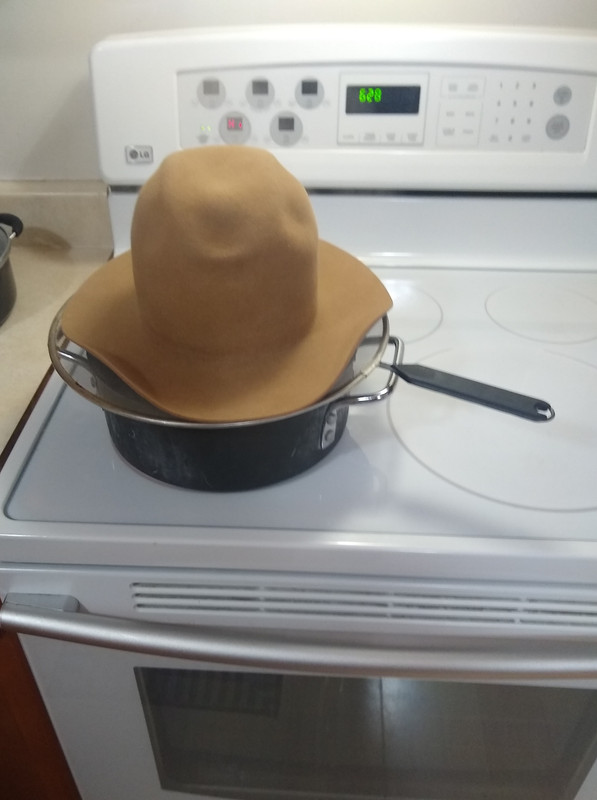- Messages
- 10,962
- Location
- vancouver, canada
Hello Everyone,
I have been looking around the forum to see if anyone has or is
making their own hat. I maybe missing that section entirely, so
far I have not found any threads started about making hats.
So far I have made three of my own hats and I am currently
working on a fourth hat, the new project is in smoke grey and
I am finding out that I should have gone with a lighter weight,
this hat is 180g weight, I should have gone with a 160g weight.
So far it is a bear, but I don't give up easy.
I have made my own hat block and a hat brim cutter. I purchased
a collection of brim flanges off of Ebay and I do use one of those,
yesterday I cut a oval shaped hole in a piece of aluminum to use when
I iron out the brim. I am also using some circular pine boards that I
purchased at Home Depot, they still work, however water is not a
friend to bare wood. I tried coating the wood with Polyurethane, however
ironing anything on a piece of wood coated with Polyurethane is not
a good idea, the fabric gets a nice coating even if it is wet.
The new hat has a brim that is about 3.25" wide and the open crown
is about 6", I still have a lot of work to do on the hat.
If there is any interest, I can post some photos as I make the hat.
More Later,
Darrell
I have a hard time working with the heavier felts as I have some arthritis in my hands. 180 grams are not too bad but the 220grams are a bear especially on non tapered square shouldered blocks. I love working with the Millinery Whse felts but the blanks are fairly tapered and hard to get them over the square shoulders of the block. If it is a larger size head I will wet block rather than just using steam. I soak the sucker thoroughly in hot water, block it (sometimes blocking it twice...say once on a 60 or 61cm block and then the final on the 62.5cm block) and let dry for 2-3 days. I get much better stretch when wet blocked than I do with just the steam.



